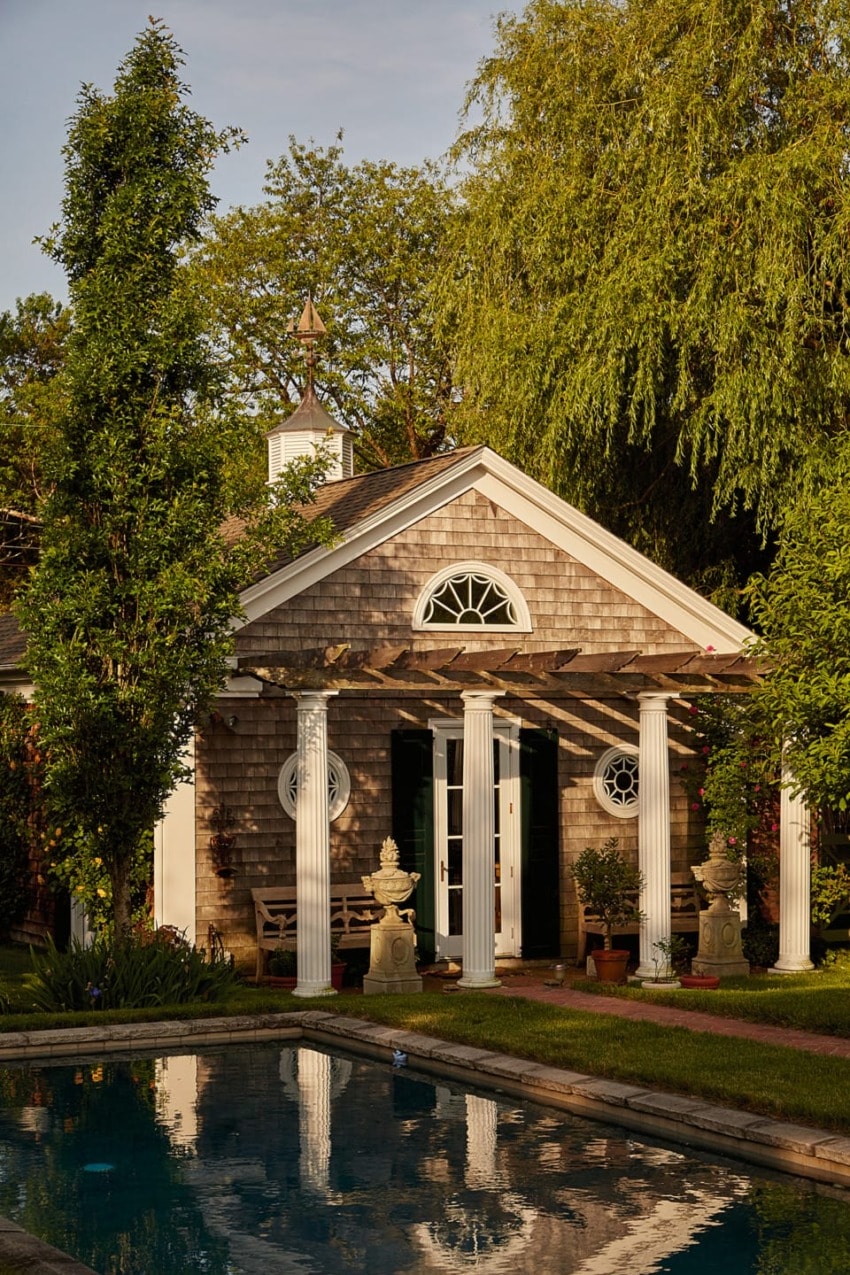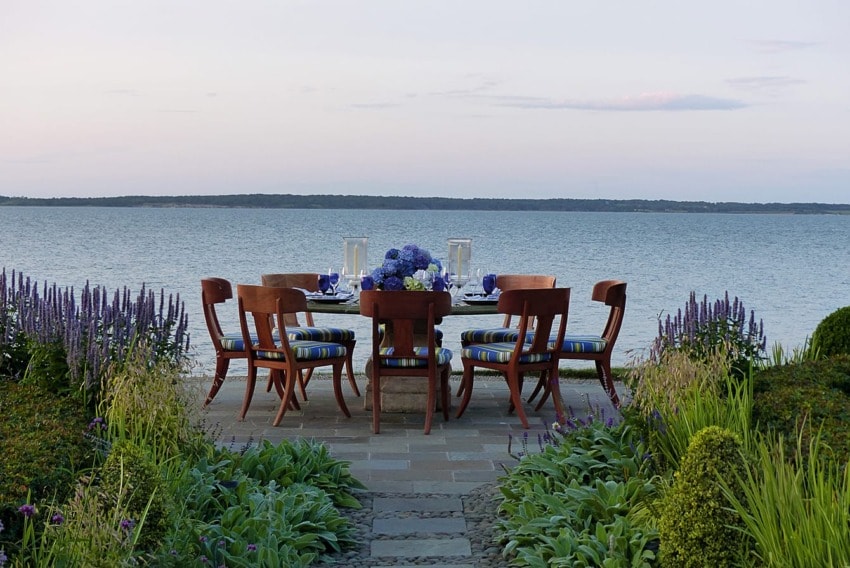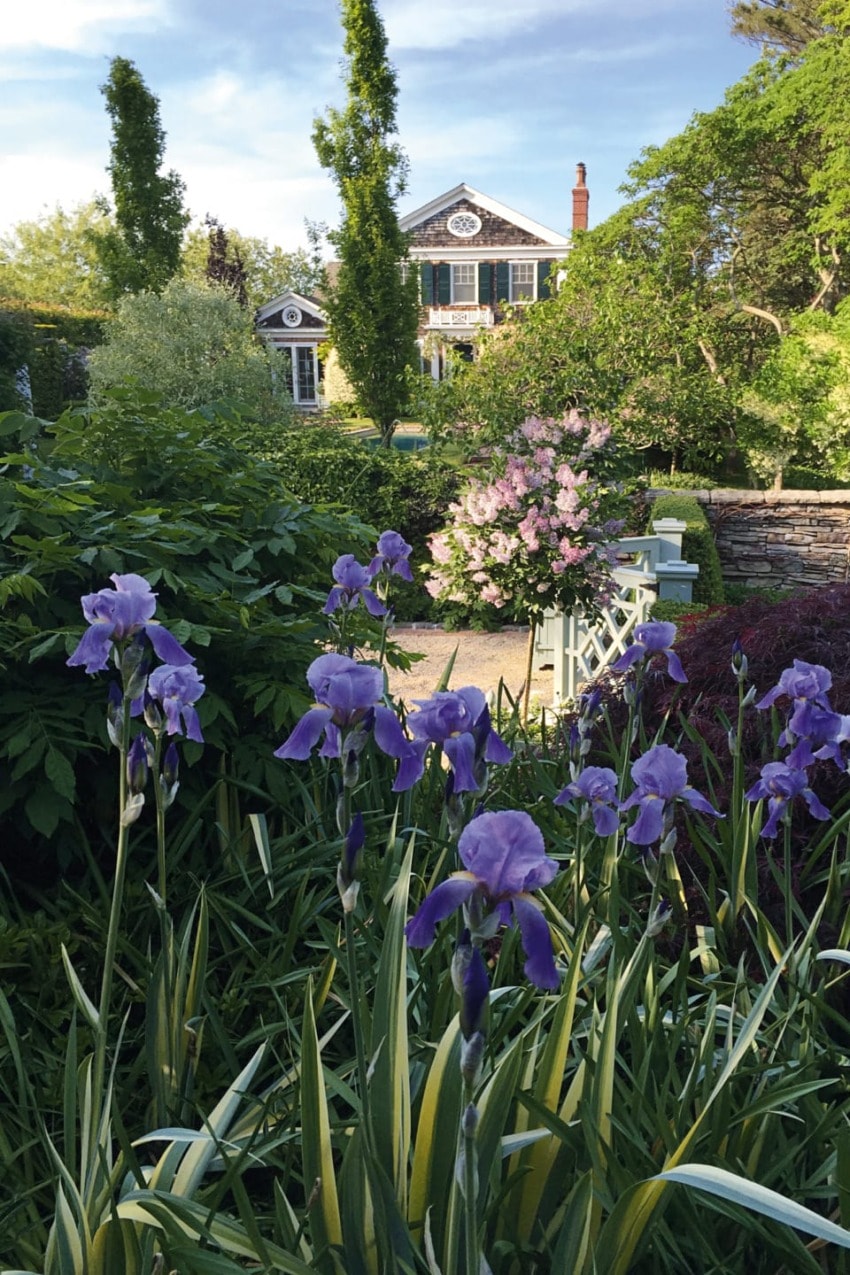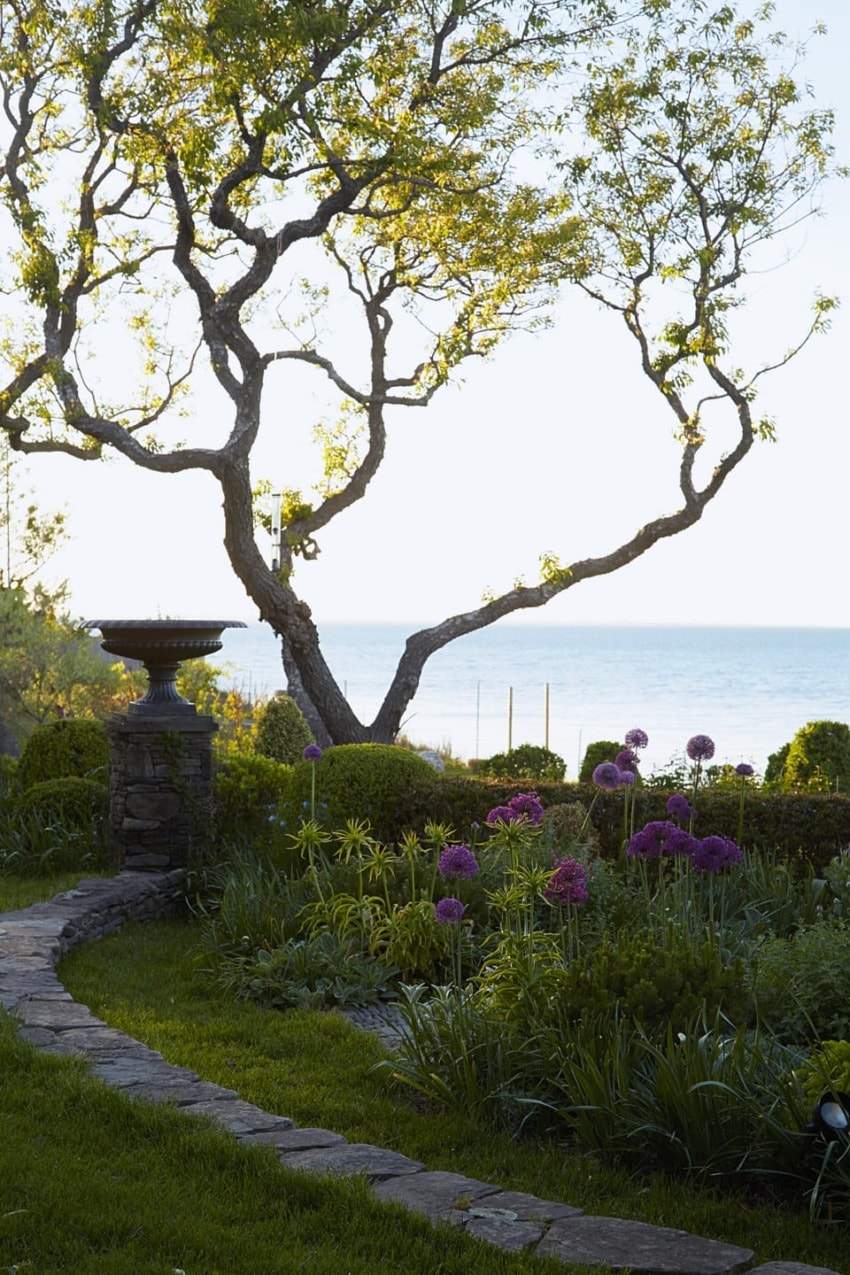Tour Designer Marshall Watson’s Gorgeous Garden
At his East Hampton home, the designer creates a verdant landscape as layered and magical as any of his interiors


Slip into Marshall Watson’s garden, and it divulges one very telling secret about the designer’s character that you might not gather from his interiors. With its exuberant vines clambering over outbuildings, lush boxwood clipped into razor-sharp orbs, and stilt hedges meticulously knit together at their elbows, the property tells of a man who has patience. No garden comes together at the snap of fingers, and a great garden takes a decade or more to mature. After the brick was laid, Chippendale gates inserted, and pergolas built, seasons came and went before the landscape was poised to blossom at the appointed hour. Marshall Watson’s East Hampton opus spent many years incubating before it came to fruition.
Thinking spatially is second nature to Watson. The fact that he carefully calibrated a formula to provide alfresco areas for dining, entertaining, swimming, and lounging in his open-air domain comes as no surprise. But to put all those amenities into perspective, consider that everything is accommodated in a property that tallies just a smidge over half an acre.

Originally, the lot was an orphan nobody wanted to adopt. In 1999, when Watson and his husband, Paul Sparks, snatched up the land, it was the last frontier on the road. Poison ivy and brambles were so abundant that the contours were virtually smothered beyond recognition. But there was a delicious view of Gardiner’s Bay and plenty of potential. Plus, the property featured the one thing Watson craved most: being near the shore. “Growing up in Kansas City, we used to say that it was only 23 hours to the beach,” he recalls with a laugh.

Constructing and appointing the Greek Revival house—which is featured in Watson’s new book, The Art of Elegance (Rizzoli)—monopolized the first few years, but a garden was always in the forefront of his mind and he staged surveillance missions to nurseries, trawling for treasures. Which reveals another hidden quality of Watson’s personality that might not be manifest in his interiors: The man is both astute and obsessive about plants. Not only does botanical Latin roll off his tongue with the greatest of ease but he is also a collector of impressive proportions.

Plants may be an obsession, but crafting the overall effect was the guiding force for a garden that was by design “voluptuous and uncontrolled.” That would explain the wisteria bounding up the poolhouse, the golden chain tree showering its branches over the gazebo, and a pair of overly plump variegated willow standards (Salix integra ‘Hakuro-nishiki’) flanking a lounging bench. He confesses that “flattering the house” was the garden’s primary function, although the landscape clearly gained a personality of its own. As for the style, he swears absolutely no allegiance. While influenced by gardens throughout the world, with an emphasis on French, Italian, and British landscape design, Watson likes to say his garden is seminally American—because it is a distillation of all those role models. Axial symmetry is alive and well, all the rules of balance and proportion are obeyed, but there’s a spunkiness to the place as well. It has intrigue.

Ask Watson about his garden, and he will refuse any analogy to his interior design style except to allow that “I do shift plants like I move furniture.” And yet you cannot help but feel that the plush stilt hedges create a sense of enclosure—like padded walls. And typical of his hallmark understated elegance in interiors, he inserts rich foliar color from burgundy-leaved trees against shades of green rather than going crazy with flowers. Cut-leaf Japanese maples serve up texture; layered trees deliver volume. It’s disarmingly unassuming with a touch of beguiling innocence. “In interiors, I know trends,” he says. “In gardens, I’m just passionate.”

